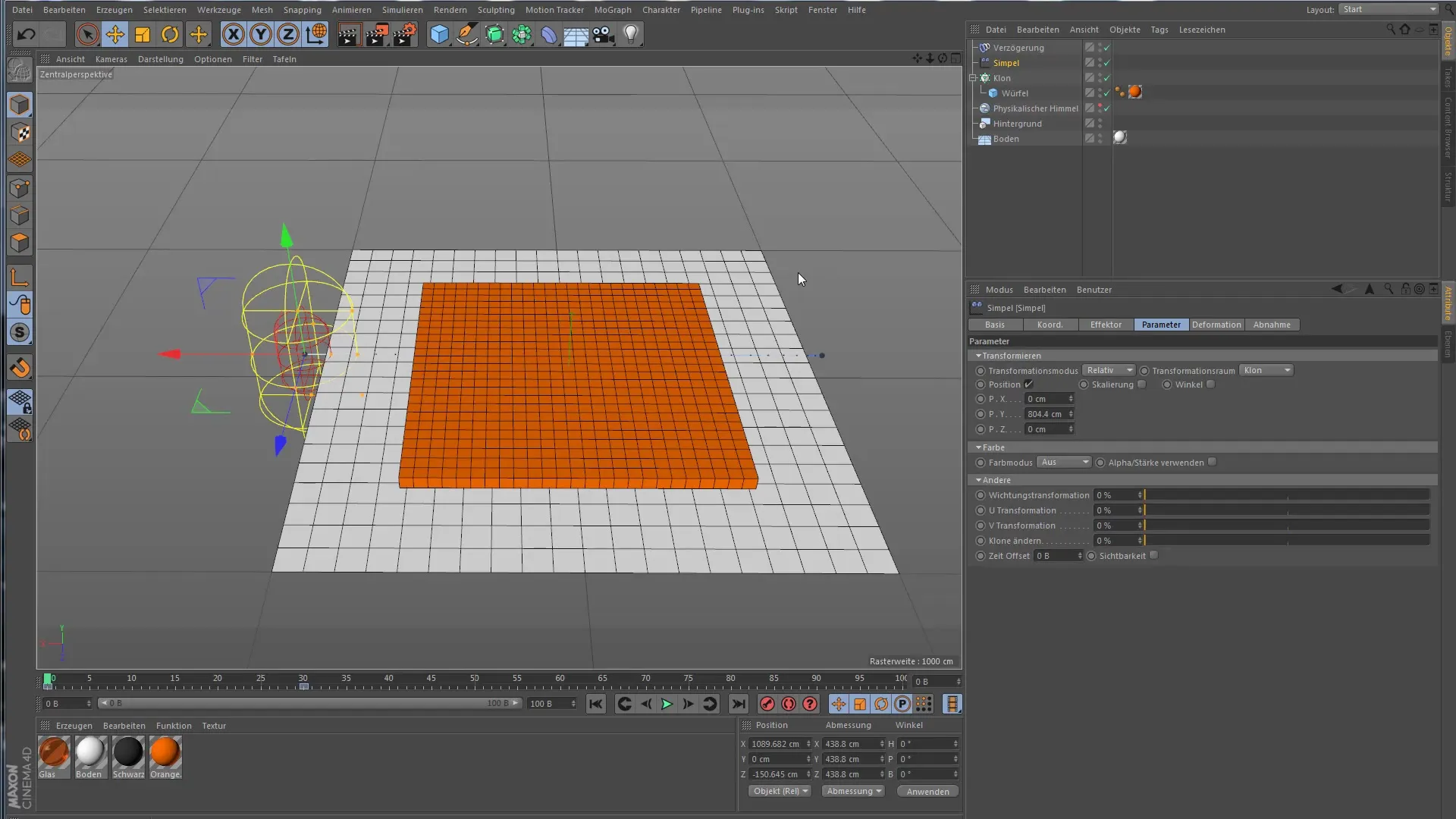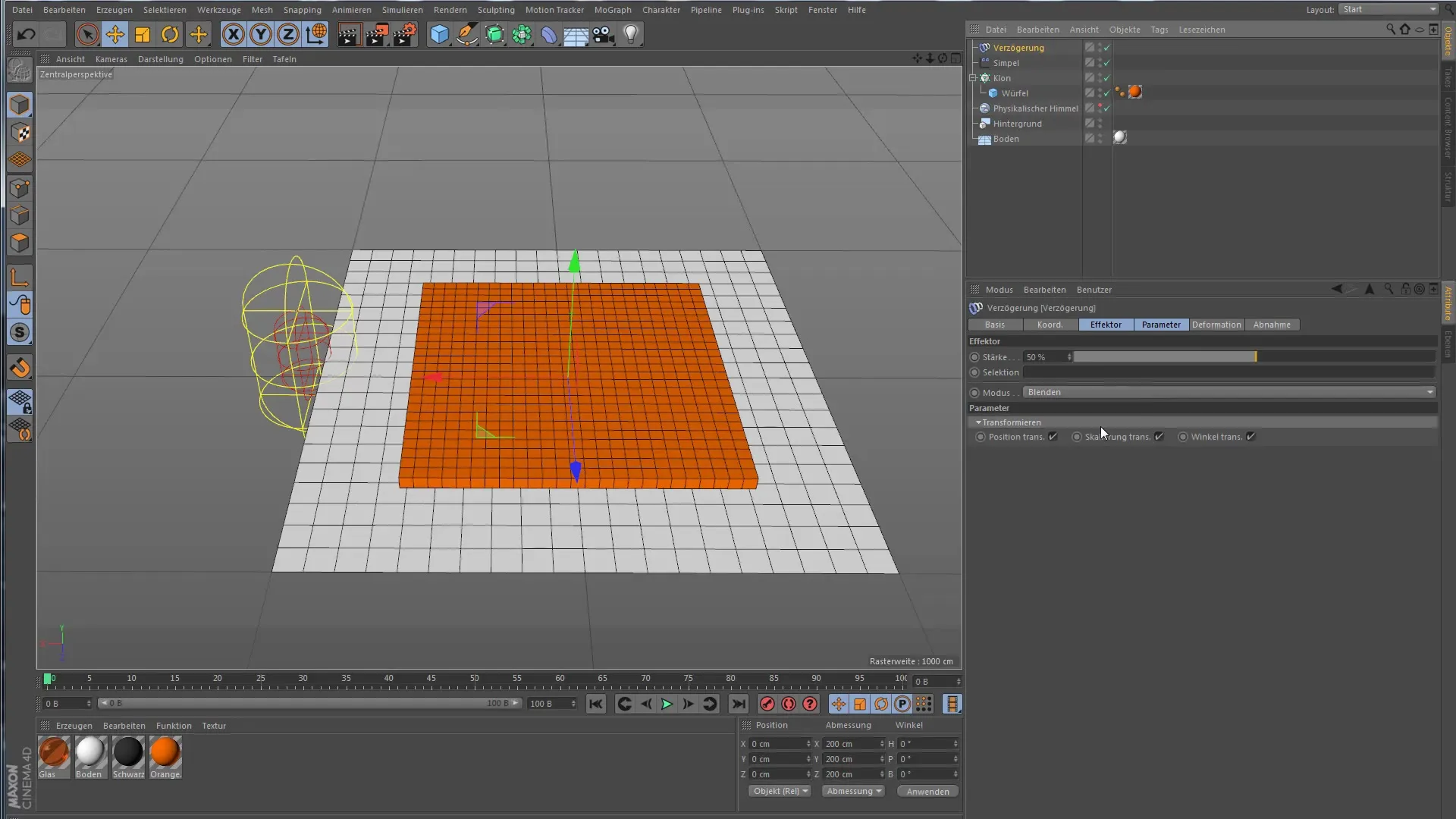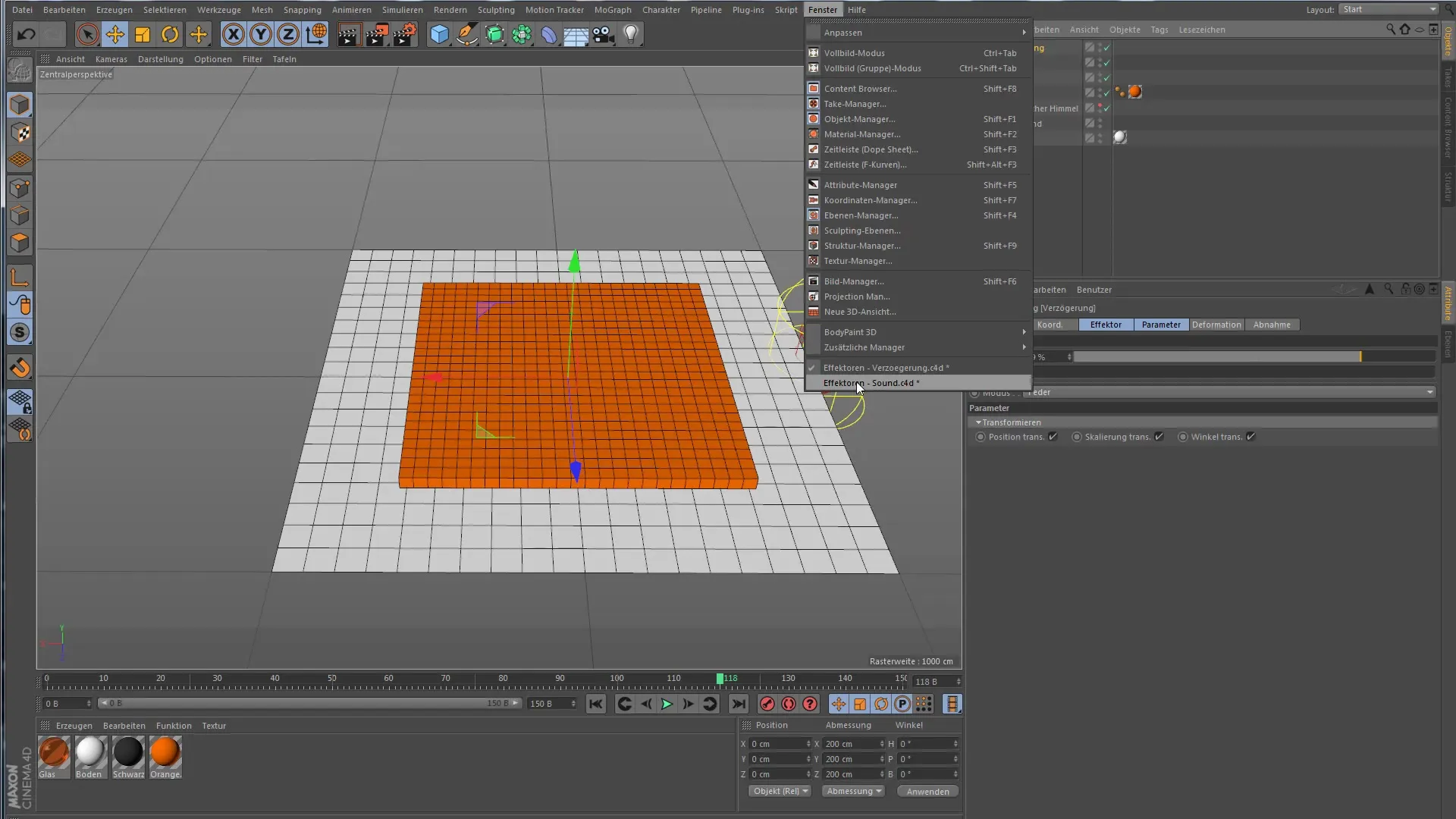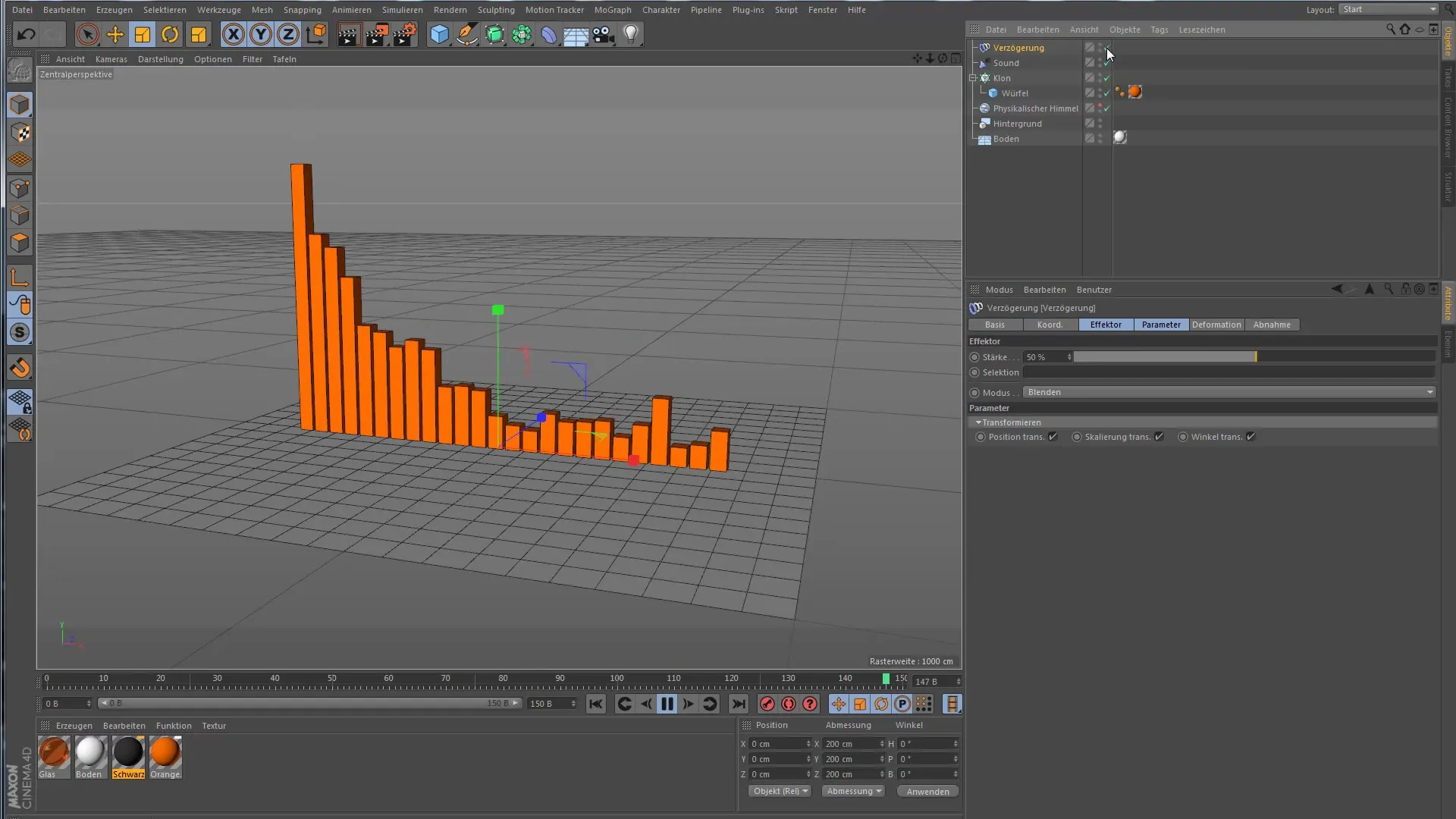Movements can sometimes seem too abrupt or jerky in 3D animation. A tool that helps you smooth these movements and make them look more natural is the Delay Effector in Cinema 4D. With this effect, you can create a soft transition or lively, bouncy movements. In this guide, you will learn how to optimally use the Delay Effector in your projects.
Key Insights
- The Delay Effector smooths movements and creates softer transitions.
- You can choose from various modes to achieve the desired movement.
- Adjusting the strength of the effect allows for individual customization options.
Step-by-Step Guide
Prepare the Scene
Before applying the Delay Effector, you need to set up a small scene in Cinema 4D. First, create a clone arrangement that serves as the basis for your animation. In my example, I created a simple clone arrangement in the center and placed a Plain Effector with the setting "Capsule" on the left. This effect ensures that the clones are only affected where the capsule-shaped object is located.

Adjust Plain Effector
Under the parameters of the Plain Effector, you have the option to move the clones upward along the Y-axis. You can animate this effector so that it moves through the clone field, lifting the clones. This creates an exciting starting situation to demonstrate the effects of the Delay Effector.
Add Delay Effector
Now comes the exciting part: Add the Delay Effector to your scene. To assign it correctly, drag the effector into the list of your clone object. It is important that the Delay Effector is at the end of the list so that it can affect the other effectors.
Settings of the Delay Effector
After you have added the Delay Effector, switch to the settings of the effector. Here, you will find clear options to set the mode and strength of the effect. Let's first play the animation and observe how the effector affects the clone field.

Analyze the Effect of the Delay Effector
Start the animation and closely observe how the clones behave when the Delay Effector is active. You will notice that the clones do not fall to the ground immediately but return to the position more gently and organically. The effector creates beautiful transitions between the state on the ground and the state at the top.
Adjustment of Delay Strength
To further refine the behavior of the clones, you can adjust the strength of the effector. Increase the strength and observe how the clones no longer fly all the way up, but only reach a certain height. This shows you the creative control you have over the movement.
Different Modes of the Delay Effector
The Delay Effector has different modes. The "Uniform" mode is available but offers little creative options. The "Bounce" mode is much more interesting. Activate this mode and see how a bouncing behavior is added. The clones are not only delayed, but they also experience a dynamic rebound.
Apply Practical Example
To demonstrate the possibilities of the Delay Effector in a practical example, let's switch to a scene from a previous tutorial where the Sound Effector was used. The movements of these clones are quite restless at first. Now add the Delay Effector to optimize the movements.

Effective Animation with the Delay Effector
Add the Delay Effector again and make sure to assign it correctly. You will immediately notice the difference: the movements of the clones become smoother and less jerky. By adjusting the strength of the effect, you can further refine the animation and achieve the desired result. This process is a matter of taste, as depending on the music and style, you can test different variations.

Summary – The Delay Effector in Cinema 4D: How to Showcase Movement
In summary, the Delay Effector is an essential tool in your animation toolbox. You can use it to smoothing movements and achieve dynamic effects that make your animations livelier. Whether with soft transitions or bouncing movements – the customization options are vast.
Frequently Asked Questions
How do I add the Delay Effector?Drag the Delay Effector into the list of the clone object and place it at the end of the list.
What does the Delay Effector do?The Delay Effector smooths movements and provides softer transitions between positions.
How can I adjust the strength of the effect?In the settings of the Delay Effector, there is a slider for the strength that you can adjust.
Can I use the Delay Effector in any project?Yes, the Delay Effector can be used in many different animations to optimize moving objects.
Are there different modes of the Delay Effector?Yes, the effector offers different modes like Uniform and Bounce, which create different movement styles.


